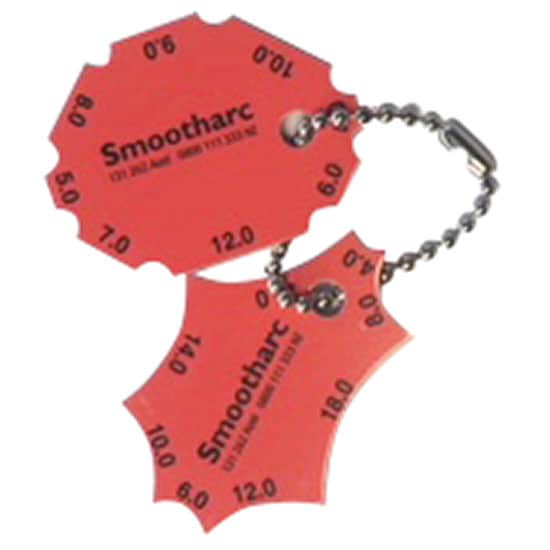Comprehending Gauge Fillet Weld: A Comprehensive Overview for Welders
Comprehending Gauge Fillet Weld: A Comprehensive Overview for Welders
Blog Article
Fillet Weld Design Strategies: Maximizing Joint Performance and Appearance for Structural Stability
In the world of architectural design and manufacture, the significance of fillet weld design strategies can not be overstated. By thoroughly taking into consideration factors such as weld profile optimization, material option, joint prep work methods, welding process performance, and visual enhancement producers, methods and engineers can achieve an unified balance in between performance and look in their bonded frameworks.
Weld Account Optimization


Accomplishing an optimal weld profile entails a meticulous factor to consider of aspects such as product thickness, joint setup, welding placement, and wanted welding rate. In addition, the choice of proper welding parameters, such as voltage, present, and travel speed, is fundamental in regulating the form and measurements of the fillet weld. Utilizing advanced welding techniques, such as pulse welding or robot welding, can additionally fine-tune the weld profile to meet specific design needs and high quality requirements.
Basically, weld account optimization is a basic aspect of fillet weld layout that directly affects the total performance and dependability of bonded joints in structural applications.
Product Selection Factors To Consider
When thinking about product choice for fillet weld layout, the compatibility of the base steels is a vital aspect affecting the structural honesty of the joint. It is vital to choose products that not only weld with each other efficiently yet additionally possess comparable mechanical buildings to guarantee the load is evenly dispersed in between the weld and the base metals. Welding materials with significantly different properties can cause issues such as anxiety focus, premature joint failure, or breaking.
In addition, the setting in which the welded structure will operate have to be considered when selecting materials. Elements like corrosion resistance, temperature variations, and exposure to chemicals can all impact the long life and performance of the weld joint. By choosing products that are suitable for the designated application and setting, the overall longevity and reliability of the bonded joint can be considerably improved.
For that reason, extensive factor to consider of product compatibility and ecological aspects is vital in guaranteeing the weld joint's stamina, durability, and overall architectural stability.

Joint Preparation Methods
Taking into consideration the essential role product choice plays in making certain the architectural integrity of fillet weld joints, it is necessary get more to execute specific joint prep work techniques that enhance the connection in between the base steels. Joint preparation is an important step that directly affects the quality and toughness of the weld.
Additionally, appropriate fit-up of the joint is important to make sure uniform circulation of the welding material and prevent problems like insufficient infiltration or too much accumulation. Beveling the sides of the base metals can develop a groove that enables much deeper weld infiltration and a stronger bond. Additionally, tack welding the parts in area before the final weld assists preserve alignment and reduces distortion during the welding procedure. By thoroughly following these joint prep work strategies, welders can improve the total performance and aesthetics of fillet weld joints while guaranteeing structural soundness.
Welding Refine Performance
Reliable welding processes are vital for attaining ideal efficiency and top quality in fillet weld fabrication. One key element of boosting welding procedure efficiency is choosing the ideal welding method. Variables such as material kind, joint style, and welding position need to be thoroughly taken into consideration to figure out one of the most appropriate method. Processes like gas metal arc welding go to this web-site (GMAW) and flux-cored arc welding (FCAW) are generally utilized for fillet welds due to their versatility and speed.
Furthermore, making sure proper equipment configuration and maintenance is vital for reliable welding. Regular calibration of welding machines, evaluation of consumables, and maintenance of soldering iron can prevent downtime and rework, eventually saving time and sources. Furthermore, utilizing knowledgeable welders with competence in the details welding procedure being made use of can significantly impact efficiency. Well-trained welders are more adept at adjusting parameters, troubleshooting concerns, and keeping regular weld top quality.
Aesthetic Improvement Techniques
To maximize the high quality of fillet weld construction, implementing aesthetic enhancement methods can play a vital function in ensuring precision and accuracy during the welding process. Visual help such as weld size determines and multiplying lenses can help in analyzing weld accounts and dimensions properly. By incorporating these visual enhancement techniques into the welding procedure, welders can accomplish not only structurally audio fillet welds however likewise aesthetically enticing results that meet market standards.
Final Thought
Finally, maximizing fillet weld design entails careful factor to consider of weld account, material option, joint preparation, welding procedure effectiveness, and aesthetic enhancement techniques. By carrying out these methods, architectural stability can be enhanced while also achieving aesthetic appeal. It is essential to focus on both efficiency and looks in fillet weld layout to make sure the general high quality and resilience of the joint.
By thoroughly considering elements such as weld account optimization, material choice, joint preparation methods, welding process efficiency, and visual improvement techniques, designers and producers can attain an unified equilibrium between functionality and look in their bonded structures.In the realm of fillet weld layout, enhancing the weld account plays a critical function in making sure structural integrity and performance. The weld profile, which includes the size and shape of the weld cross-section, straight influences the distribution of anxiety and load-bearing capability within the joint. It is essential to select materials that not just bonded together efficiently but also have comparable mechanical properties to make certain Website the tons is evenly distributed in between the weld and the base metals - Gauge Fillet Weld.In final thought, optimizing fillet weld style involves mindful consideration of weld account, product option, joint preparation, welding procedure performance, and visual enhancement approaches
Report this page